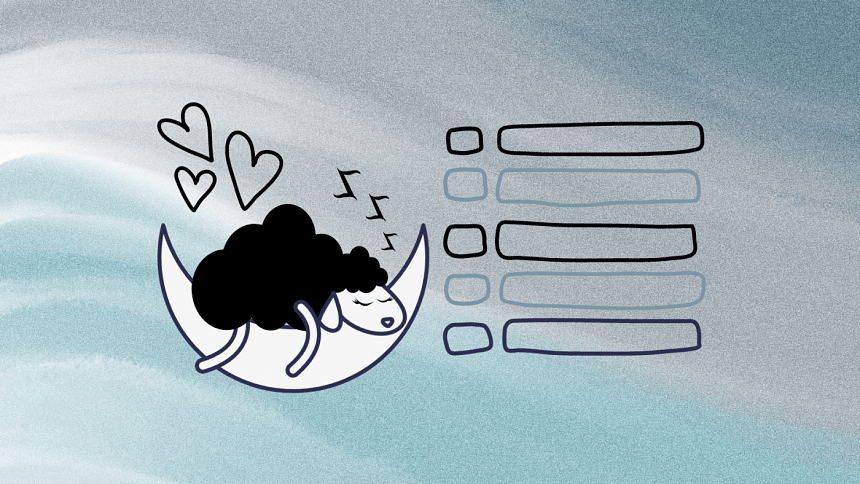5 tips to make you sleep fast

Getting enough quality sleep is of the utmost significance. Sleeping improves your mood and enables your body and mind to operate efficiently. For some, snoozing off poses no challenge whatsoever. However, many people have major trouble falling asleep or staying asleep. Memory, cognition, emotions, sensations, and many other brain and body processes may all suffer from insufficient sleep. If you are having trouble sleeping, try one of these 5 tricks to get some much-needed shut-eye.
4-7-8 technique
Dr Andrew Weil's "4-7-8" technique promotes relaxation and tranquillity. This is yoga-inspired breath control, which soothes the neurological system and so, it may be done whenever you are stressed. First, insert your tongue tip behind your top front teeth. Exhale fully and generate a "whoosh" sound. Close your lips and inhale while counting to 4. Hold your breath while you mentally countdown to 7. Finally, exhale fully with a "whoosh" sound and then mentally countdown to 8. Repeat this three times. You will find that this technique both relaxes and assists you in falling asleep more quickly.
Military technique
Sharon Ackerman popularised the military approach when the US Navy Pre-Flight School developed a program to assist pilots to fall asleep in two minutes or less even after coffee and gunfire. Start by relaxing your facial and mouth muscles. Then, drop your shoulders and allow your hands to fall to your sides to relax. After that, exhale, easing your chest. Now, relax your calves, thighs, and legs. Imagine a peaceful scenario for 10 seconds. If that does not work, repeat "don't think" for 10 seconds. This technique has proven to be effective in the field and it can certainly work in the bedroom.
Schedule technique
Your body has its regulatory system called the circadian rhythm. This internal clock cues your body to feel alert during the day but sleepy at night. Therefore, waking up and going to bed at the same time each day can help your internal clock keep a regular schedule. Once your body adjusts to this schedule, it will be easier to fall asleep and wake up around the same time every day. This is the optimal sleep technique for adults, especially because a schedule gives them much more stability mentally as well. Lastly, give yourself 30-45 minutes to wind down in the evening before getting in bed. This allows your body and mind to relax and prepare for sleep.
PMR technique
Breathing exercises are paired with rhythmic muscular tension and release in a method called progressive muscle relaxation (PMR). This approach involves systematically tensing and then relaxing each of the body's main muscle groups. Relax with your eyes closed and your breathing slow and deep. Then, for the next 10 seconds, strain your facial muscles. Relax and take a few deep breaths to calm down. Now, for the next 10 seconds, maintain a stiff position on your shoulder blades. Take several deep breaths in and out. Do the same with the other sets of muscles in your body, beginning with the muscles of your shoulders and ending with your toes and feet. Leave out the parts that hurt the most and soon you will be comfortable enough to fall asleep.
Guided imagery technique
Instead of lying in your bed fretting about unpleasant events, picture yourself in a peaceful and cheerful setting. One research found that instructing participants to utilise a mental distraction technique called "Guided Imagery" helped them go to sleep more quickly. They found that by using this method in the hours before bed, they were able to get their minds off of stressful ideas and instead focus on positive ones. Taking your mind off the things that are keeping you awake at night might be as simple as visualising and focusing on a serene setting.

 For all latest news, follow The Daily Star's Google News channel.
For all latest news, follow The Daily Star's Google News channel. 








Comments